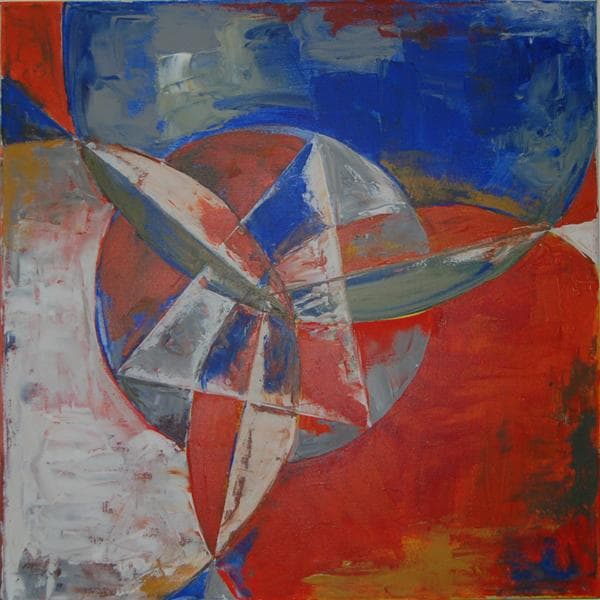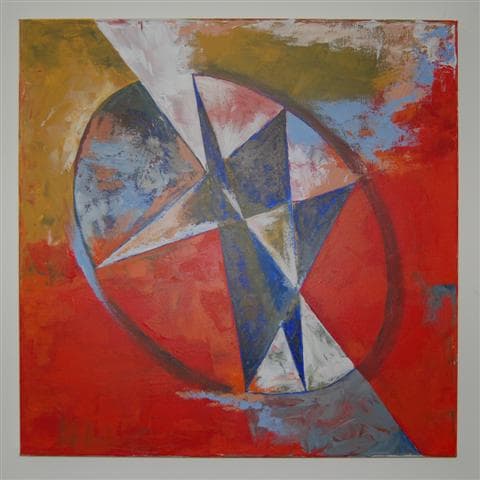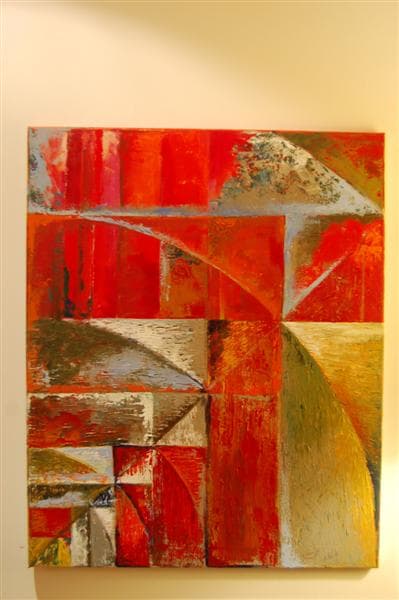Suman Vaze
Artists
Suman Vaze
Artist, Maths teacher
King George V School
Hong Kong
Statement
I seek to depict interesting mathematical truths, curiosities and puzzles in simple, visually descriptive ways. Mathematical amusements inspire the color and form in my paintings, and I try to strike a balance between the simplicity of the concepts and their depiction in art. The logic and balance of the discipline is beautiful, and I like art that both stills and stimulates the mind – these are the qualities I strive to capture in my work.
Artworks

Three Fish on a Plate - Common Chords
24" x 24"
Acrylic on canvas
2010
If three circles intersect, the three common chords intersect at a point.

The Pascal Line
24" x 24"
Acrylic on canvas
2010
At the age of 16, Blaise Pascal discovered and published his famous theorem entitled Essai pour les Coniques. The theorem states that if a hexagon is inscribed in a conic then the three points in which the opposite sides meet are collinear. The line is The Pascal Line. My work shows the Pascal Line in a zig-zag inscribed hexagon.

Sacred Cut
24" x 30"
Acrylic on canvas
2010
The Sacred Cut was perhaps historically used to find a method to double the area of a given square. For example, in order to double the altar they could not simply double the sides. The Sacred Cut gave a means to do it. It produces the Silver Rectangle with ratio of sides 1:√2 which is used in A Form paper. This work illustrates how to construct the Silver Rectangle or the Sacred Cut and also gives an impression of doubling both the rectangles and the squares.